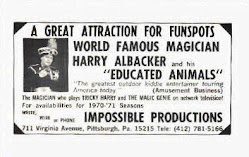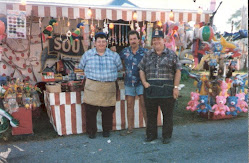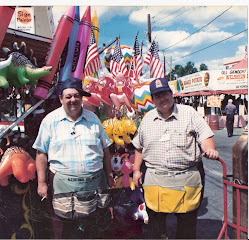Zoo’s lone elephant will leave
Monday November 15, 2010
This spring, the Henry Doorly Zoo will be without an elephant exhibit for the first time in more than 40 years.The zoo is in the process of finding a new home for Shenga, the 28-year-old African elephant who lives on Pachyderm Hill. The move was precipitated by the death of 47-year-old Maliaka on Oct. 16, which left Shenga alone.
The elephant exhibit, which was created on the baseball field of the old Riverview Park in 1968, is out of date, said Dennis Pate, zoo director and CEO. And elephants need to be in a social setting with other elephants.
Shenga came to the zoo in 2001, to be company for Maliaka after the death of 50-year-old Penny.
The zoo’s master plan calls for a new elephant exhibit in the proposed African Grasslands exhibit. It will have eight times the outdoor exhibit space of the current exhibit, and will be built on grass and sand rather than concrete. The indoor winter space will be 18 times larger, and its floor will be covered with deep sand.
But most importantly, there will be a herd of elephants, and they will stay together day and night all year long.
Deciding which Association of Zoos and Aquariums member institution Shenga will be sent to won’t be made lightly. The decision will be based on what will be best for Shenga.
Communication with some of the zoos looking for elephants has begun. Those zoos also want to make sure Shenga will be a good fit in their elephant exhibits.
Elephant managers from potential zoo homes will visit Omaha, and Shenga is expected to be moved by spring.
Shenga will be on loan to whichever facility is chosen, so that the Henry Doorly Zoo “keeps its card in the game” with elephants, Pate said. Whether she becomes a part of the proposed African Grasslands exhibit will depend on how she adapts to her new life.
If she becomes an integral part of an elephant family, she probably will stay at her new home, he said. “We won’t want to take her away from that.”
But if she hangs on the fringes of the herd, she may return to Omaha, he said.
Pate said the zoo already is considering what to do with the elephant exhibit space on Pachyderm Hill. The white rhinos will stay there, although they won’t have to share the indoor space.
Once Shenga leaves, the rhinos will have the entire building.
Fundraising for the new zoo entrance and aquarium updates is nearly completed, Pate said. He hopes that project will be finished next year. Next up in the master plan? Fundraising for the first animal project, the African Grasslands.
“We want people to know that we’re going to find her a good home, that we’re not going to keep her here,” Pate said of Shenga. “In the meantime, we’ll spoil her.”
The elephant exhibit, which was created on the baseball field of the old Riverview Park in 1968, is out of date, said Dennis Pate, zoo director and CEO. And elephants need to be in a social setting with other elephants.
Shenga came to the zoo in 2001, to be company for Maliaka after the death of 50-year-old Penny.
The zoo’s master plan calls for a new elephant exhibit in the proposed African Grasslands exhibit. It will have eight times the outdoor exhibit space of the current exhibit, and will be built on grass and sand rather than concrete. The indoor winter space will be 18 times larger, and its floor will be covered with deep sand.
But most importantly, there will be a herd of elephants, and they will stay together day and night all year long.
Deciding which Association of Zoos and Aquariums member institution Shenga will be sent to won’t be made lightly. The decision will be based on what will be best for Shenga.
Communication with some of the zoos looking for elephants has begun. Those zoos also want to make sure Shenga will be a good fit in their elephant exhibits.
Elephant managers from potential zoo homes will visit Omaha, and Shenga is expected to be moved by spring.
Shenga will be on loan to whichever facility is chosen, so that the Henry Doorly Zoo “keeps its card in the game” with elephants, Pate said. Whether she becomes a part of the proposed African Grasslands exhibit will depend on how she adapts to her new life.
If she becomes an integral part of an elephant family, she probably will stay at her new home, he said. “We won’t want to take her away from that.”
But if she hangs on the fringes of the herd, she may return to Omaha, he said.
Pate said the zoo already is considering what to do with the elephant exhibit space on Pachyderm Hill. The white rhinos will stay there, although they won’t have to share the indoor space.
Once Shenga leaves, the rhinos will have the entire building.
Fundraising for the new zoo entrance and aquarium updates is nearly completed, Pate said. He hopes that project will be finished next year. Next up in the master plan? Fundraising for the first animal project, the African Grasslands.
“We want people to know that we’re going to find her a good home, that we’re not going to keep her here,” Pate said of Shenga. “In the meantime, we’ll spoil her.”




















































































No comments:
Post a Comment